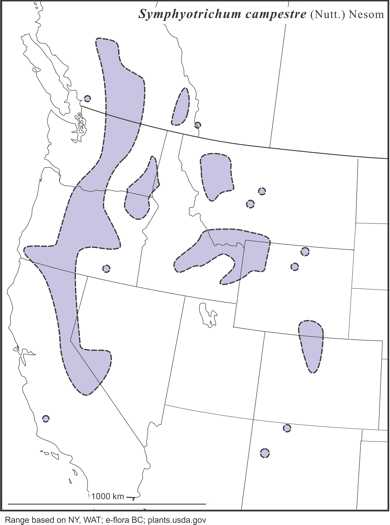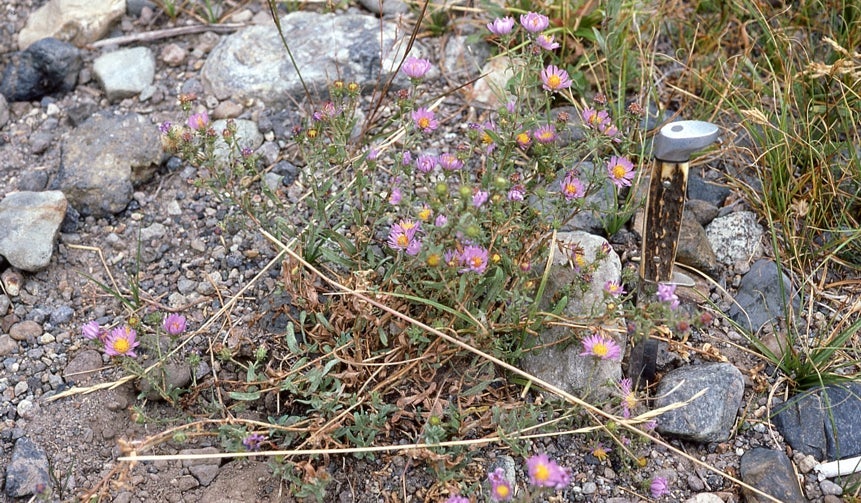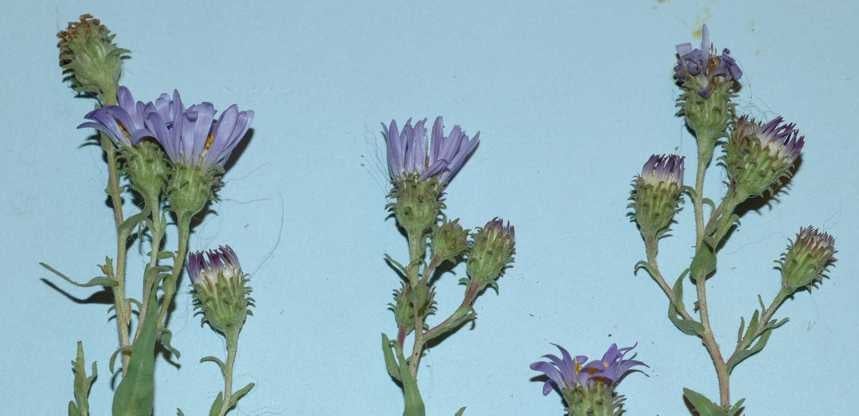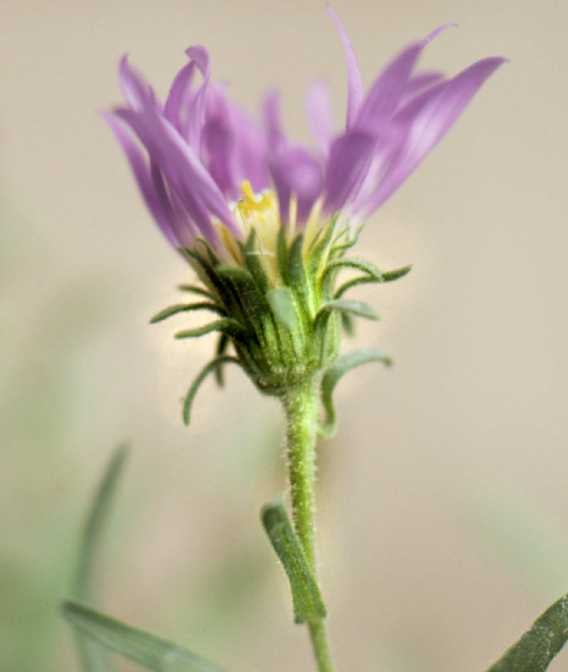Western Meadow Aster

Symphyotrichum campestre (Nutt.) G.L. Nesom is native to Open, often dry, disturbed, rocky and sandy soils near ponds and streams, dry grass meadows, open pine-douglas fir forests, plains to montane zones from British Columbia and Alberta south to California and Colorado (Brouillet et al. 2006 FNA). The range appears to be very patchy. The species is distinguished by its rhizomatous rootstocks, 10-40 cm tall stems, thick (firm) leaves with hairy of glabrate undersurfaces and acute ± mucronate tips, spreading hairless phyllaries, 15-31 violet-purple rays, and fruit bodies that are moderately strigose on the 3-4 ribs. The species is diploid with x=5 (2n=10).
Two poorly defined varieties of Symphyotrichum campestre have been described. Variety campestre has glabrous or sparsely strigose leaves and occurs in southern British Columbia, Colorado, Idaho, Montana, Nevada, Oregon, Washington, and Wyoming. Bloomer’s Aster, var. bloomeri, has moderately strigose leaves and occurs in California, Nevada, and Oregon. The varieties are not sufficiently distinct to warrant recognition.
Symphyotrichum ×columbianum (Piper) G. L. Nesom (syn. Astercolumbianus Piper, A. multiflorus Aiton var. columbianus (Piper) S. F. Blake, Virgulus ×columbianus (Piper) Reveal & Keener) is the hybrid between S. campestre and S. ericoides subsp. pansum.
Last revised 16 May 2025 by J.C. Semple
© 2025 J.C. Semple, including all photographs unless otherwise indicated
1-4. Symphyotrichum campestre. 1. Habitat and Habit, Semple & Heard 8685, Mono Co., California. 2-3. Inflorescences and leaves, Semple & B. Semple 11362, Blaine Co.Idaho. 4. Head, S & H 8685.
Brouillet, L., J.C. Semple, G.A. Allen, K. Chambers and S. Sundberg. 2006. Symphyotrichum Nees. pp. 465-539. In Flora North America Editorial Committee, eds. Flora of North America. Vol. 20. Asteraceae, Part 2. Astereae and Senecioneae. Oxford University Press, New York.







